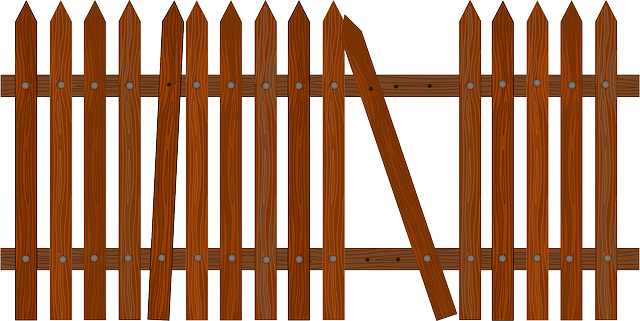In New Bedford, Massachusetts, the diverse seasonal climate demands tailored fence maintenance strategies. This article guides property owners through the intricacies of keeping their fences in top condition year-round. By understanding the unique challenges posed by each season, from harsh winters to humid summers, homeowners can effectively maintain their barriers. We offer a comprehensive pre-seasonal inspection checklist, cleaning tips, storage strategies, and insights into common seasonal issues. Armed with these recommendations, New Bedford residents can ensure their fences remain sturdy, secure, and aesthetically pleasing.
- Understanding New Bedford's Climatic Conditions for Fencing
- Pre-Seasonal Fence Inspection Checklist
- Cleaning and Maintenance Tips for Longevity
- Seasonal Storage and Protection Strategies
- Common Issues to Address During Each Season
Understanding New Bedford's Climatic Conditions for Fencing
New Bedford, Massachusetts, experiences four distinct seasons, each with its unique climatic challenges. Understanding these conditions is crucial for maintaining fences and ensuring their longevity. The harsh winters can bring heavy snowfall and freezing temperatures, which may cause fence posts to heave and shift over time. Additionally, the coastal location of New Bedford exposes fences to salt air, a factor that accelerates corrosion and deterioration, especially in metal fencing.
Summer brings high humidity levels and occasional storms, contributing to mold and mildew growth on wooden fences. Fall marks the transition with cooler temperatures and changing foliage, which can be beneficial for certain fence materials but also signals the need for preparation before the harsh winter sets in.
Pre-Seasonal Fence Inspection Checklist
Before the busy season begins, it’s crucial to conduct a thorough inspection of your fence to ensure its structural integrity and longevity. Here’s what to look out for during your Pre-Seasonal Fence Inspection Checklist in New Bedford, Massachusetts:
1. Visual Examination: Walk along the entire length of your fence, checking for any visible signs of damage like cracks, warping, or rot, especially at the base where it meets the ground. Pay close attention to areas that have been previously repaired or treated, as these spots may require re-inspection and reinforcement. Look out for loose boards, hinges, or brackets, which could indicate potential problems down the line.
2. Functional Parts: Test all parts of your fence that operate, such as gates, locks, and latches, ensuring they open and close smoothly without any sticking or misalignment. Check for any signs of rust or corrosion on metal components, especially in damp regions. Replace worn-out hardware to maintain the fence’s stability and security.
Cleaning and Maintenance Tips for Longevity
Regular cleaning and maintenance are essential to keep your fence looking its best and ensuring its longevity. Start by sweeping or brushing away any loose debris, such as leaves, grass clippings, or dirt, at least once a week during the fall season. This simple step prevents buildup that can weaken the fence over time.
Use a soft-bristled brush or garden hose to gently clean the fence surface. Avoid powerful pressure washers, which can damage the wood or create splinters. After cleaning, apply a fresh coat of paint or sealant if needed, following the manufacturer’s instructions for optimal protection against New Bedford’s varying weather conditions.
Seasonal Storage and Protection Strategies
In New Bedford, Massachusetts, where seasons bring varying weather conditions, proper storage and protection of your fence are essential to maintain its longevity. During the winter months, harsh winds and freezing temperatures can take a toll on even the sturdiest fences. Therefore, it’s recommended to cover wooden or metal fences with protective sheets or nets to shield them from snow accumulation and ice damage. This simple step ensures that your fence remains in good condition until spring arrives.
For summer storage, consider elevating your fence off the ground to prevent pests and rodents from causing harm. If you have a wooden fence, check for rot or insect infestation regularly and treat it promptly. Keeping the fence clean and free of debris also helps maintain its aesthetic appeal and structural integrity.
Common Issues to Address During Each Season
In New Bedford, Massachusetts, fence maintenance requires addressing unique seasonal challenges. Spring brings a surge in growth, often revealing damage from winter and prompting repairs. Summer’s warmth necessitates regular cleaning to prevent rot and keep the fence looking pristine. Autumn poses specific risks due to falling leaves and the potential for frost that can weaken structures. Winter’s harsh conditions, including snow and ice, can cause significant wear and tear, requiring careful inspection and maintenance before the cold sets in.
Each season offers critical opportunities for thorough inspections, cleaning, sealing, and repairs to ensure fences remain sturdy, safe, and aesthetically pleasing. Timely action is key to preventing minor issues from escalating into costly repairs.
